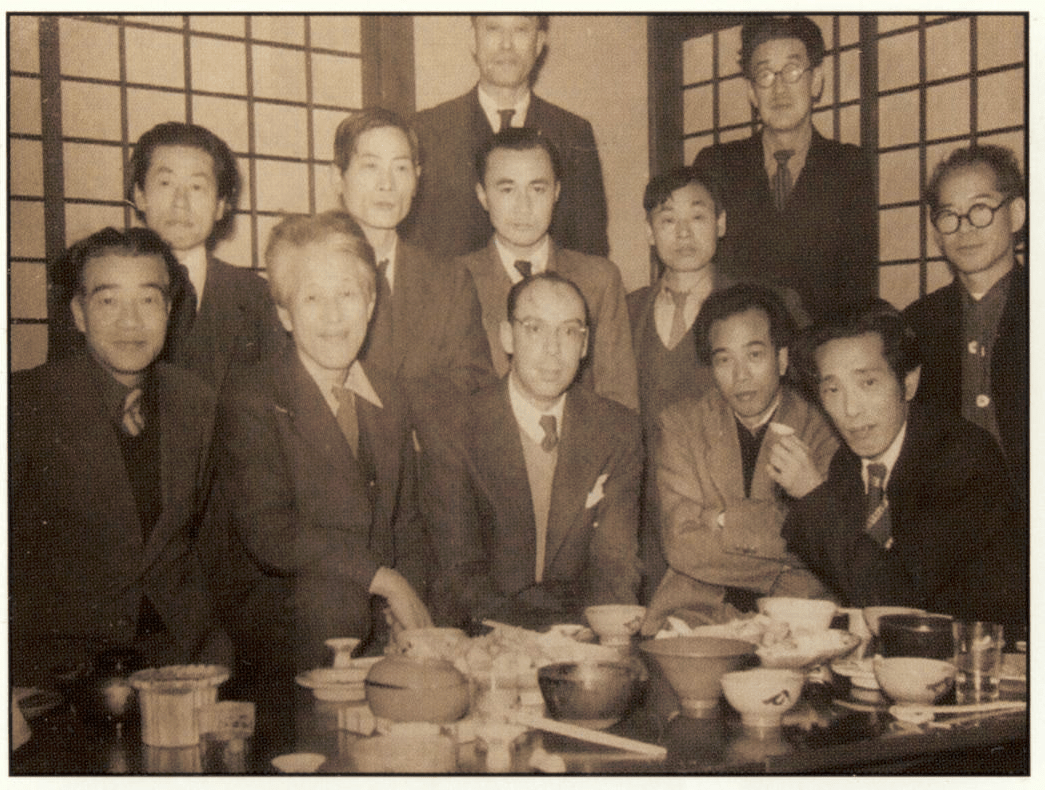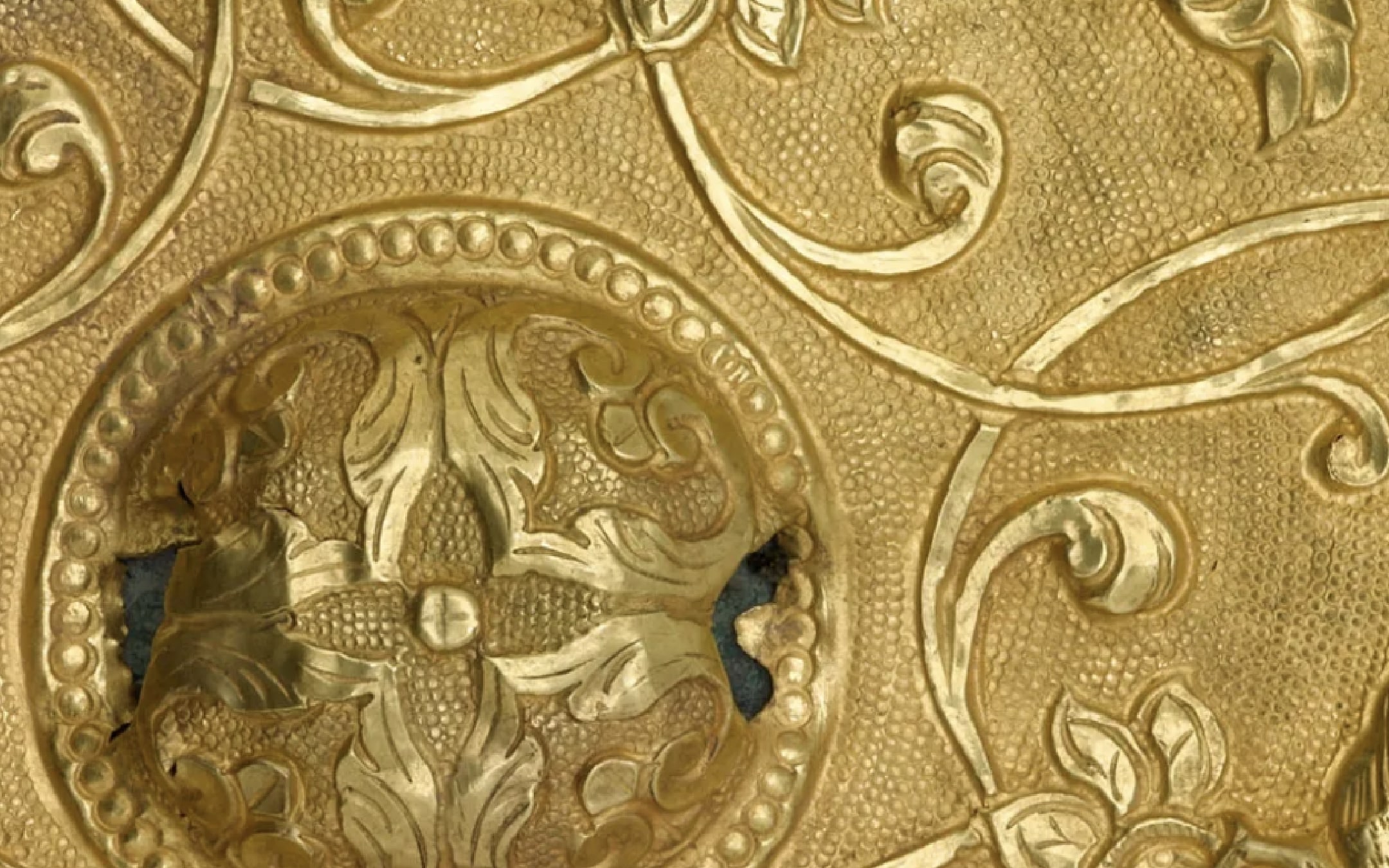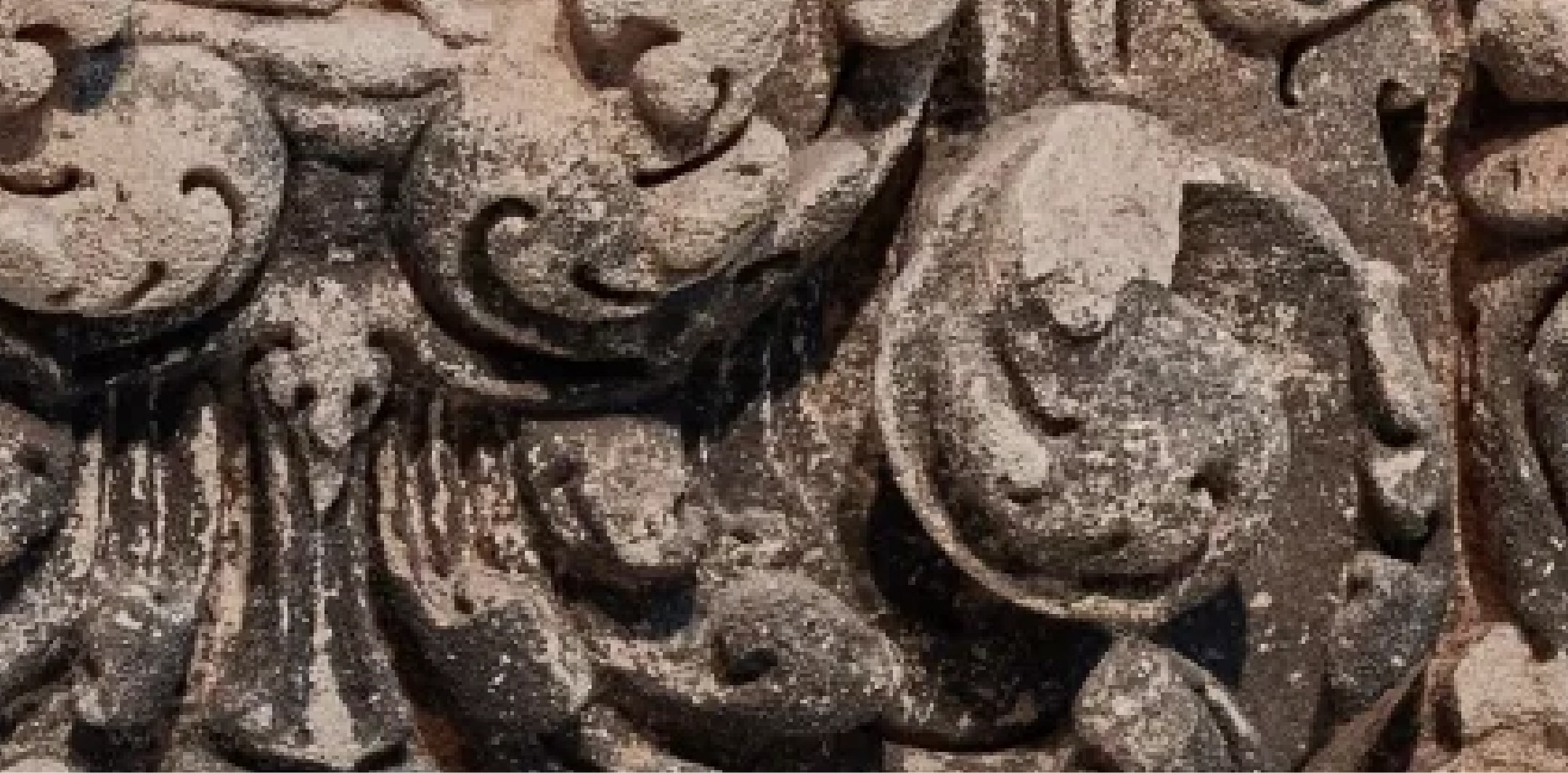Joryū Hanga Kyōkai (女流版画協会, Women’s Print Association)
The Joryū Hanga kyōkai was Japan’s first women’s printmaking association, founded in 1955 by Yoshida Chizuko, Iwami Reika, Nishigai Kazuko, Hayashi Tomiko, Uchima Toshiko, Kobayashi Donge, Nonaka Yuri, Shishido Tokuko, and Minami Keiko. Later members included Shima Tamami, Enokido Maki, Takahashi Junko, Tochigi Unko, and Motoyama Michiko. The association’s purpose was to improve exhibition opportunities and provide camaraderie for women printmakers in the male-dominated Japanese print world. The group exhibited together in Japan and the United States until it was disbanded in 1965.
Nihon Sōsaku Hanga Kyōkai (日本創作版画協会, Japan Creative Prints Association) / Nihon Hanga Kyōkai (日本版画協会, Japan Prints Association)
The Nihon Sōsaku Hanga Kyōkai was a sōsaku hanga association founded by Yamamoto Kanae, Oda Kazuma, Terasaki Takeo, and Tobari Kogan in 1918. The name was changed to the Nihon Hanga Kyōkai in 1931. The association’s purpose was to promote printmaking as a modern art. In addition to holding exhibitions, group activities included publishing print portfolios.
Print techniques/tools
A flat, circular printing pad made of coiled bamboo fibers used to apply pressure to the paper to transfer the ink from the block to the paper.
collagraph
A printmaking process wherein materials such as netting, string, leaves, or other three-dimensional objects are glued or sealed to a rigid surface (such as a block of wood or cardboard), creating a textured plate. The plate is then inked and run through a press, transferring the texture pattern onto the print.
karazuri (空摺) / kimedashi (きめ出し)
Karazuri and kimedashi are two related techniques to create embossing, or a raised design on the surface of a print. Karazuri (“empty printing”) describes the method by which the pressure of the baren against a carved but uninked block causes the paper in between to flatten in the areas of the raised lines on the block. Kimedashi (“pushing out”) is used in larger areas and refers to the practice of forcing the damp paper into the recesses of a carved but uninked block. When the paper is removed, it maintains the contours of the uninked design.
kirazuri (雲母摺)
A traditional printmaking technique that uses mica powder to add sparkle to the print. The mica can be applied through different methods, including mixing it into the printing ink or sprinkling it onto the paper surface while the ink is still wet. Mica mixed with glue can also be brushed onto the print.
mokumezuri (木目刷り)
In this printing method, the artist prints directly from a visibly grained piece of wood. Sometimes the artist will burn the wood with a blowtorch to weather it or to emphasize the grain by clearing sections with a wire brush or soaking the block in water. In the postwar period, artists used many varieties of wood for this technique, including cedar, cherry, and plywood faced with types of wood that have a more pronounced woodgrain, such as shina (basswood), katsuragi (katsura), yanagi (willow), or keyaki (zelkova). To make the print, slightly dampened paper is lightly laid over the prepared block, and pressure is applied from the back to transfer the woodgrain pattern onto the paper.
photogram
A photographic image made without the use of a camera by placing an object directly on the surface of a light-sensitive material, such as photographic paper, and then exposing it to light. Typically, a negative image is created, with areas receiving full light exposure appearing black and those blocked by the object appearing white.



